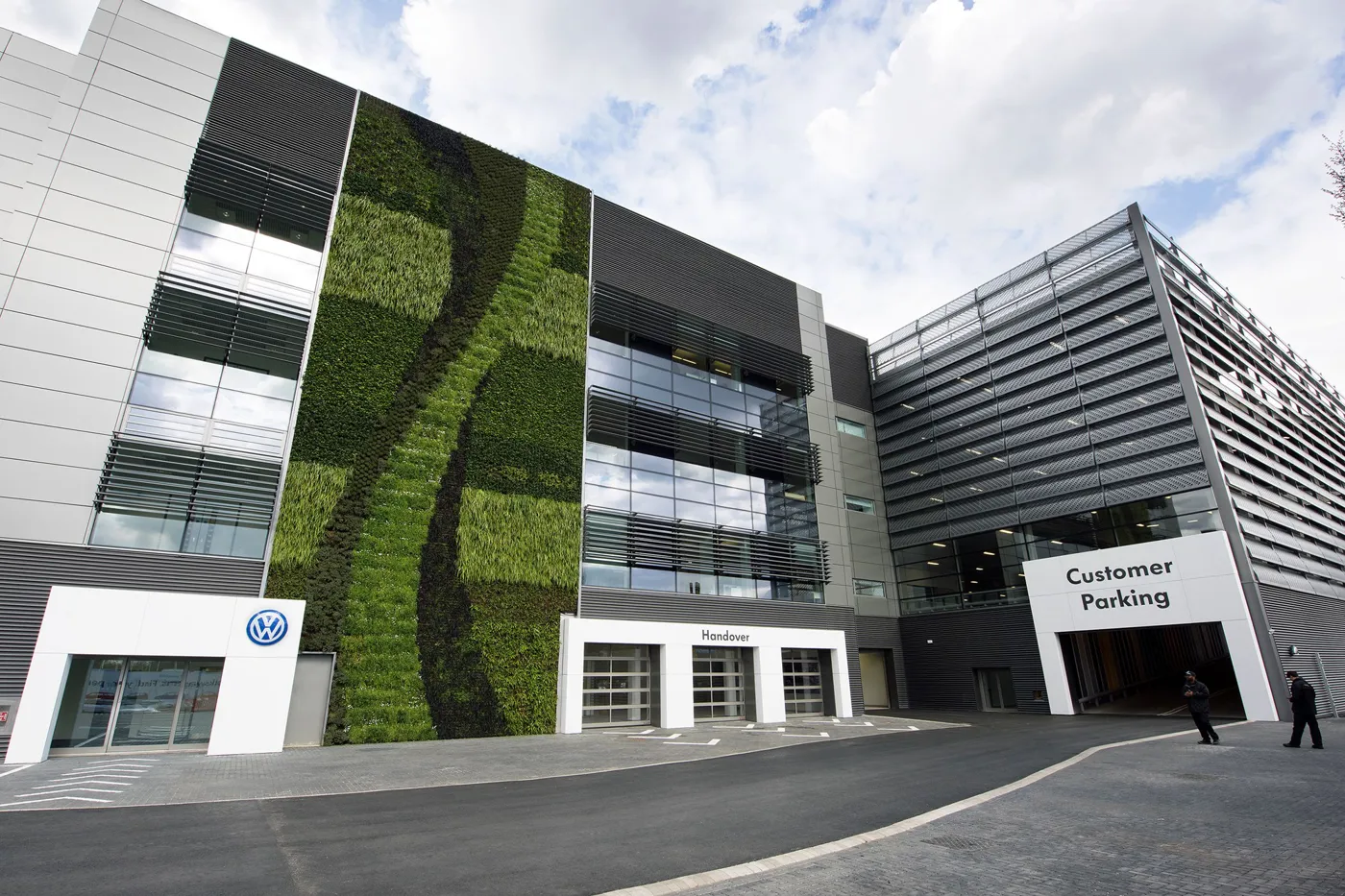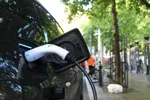By Debbie Kirlew
Automotive retailing and property have always been intrinsically connected – dealerships needed physical locations from which to sell and service cars. However, as the internet age has developed, consumer behaviour has changed from physical visits to digital ones. Meanwhile, property prices have shot up and manufacturers continue to issue exacting brand standards.
Looking halfway into the next decade, AM asked industry experts to identify areas where they think the dealer’s relationship with property may change.
Property ownership
Property prices and development opportunity will influence the face of automotive retail, as fewer retailers own high-profile sites, according to automotive retail commercial property specialists Robert Stephens & Co.
Land within the M25 is almost impossible to source for less than £2 million an acre, while land zoned for high-density residential development costs more than £30m an acre (compared with £150,000-£650,000 an acre in many UK towns).
“Car dealers are being displaced,” said managing director Robert Stephens.
Bill Bexson, managing director of Automotive Property Consultancy, agreed: “Dealers at the apex of the property curve have the best chance of securing the best franchises. It’s not about who controls the ether. The dealers who own the property will be the kings of the castle.”
Bigger dealerships will emerge
The automotive dealership will still exist in 2025, said Bexson, as so much activity takes place under its roof. In fact, he said he is handling increased requests to source bigger sites, especially as dealers are required to store, park and display more vehicles.
“We can expect bigger yet fewer sites with the polarisation at the top and bottom; you have either got to be big and bold or small and niche.”
Mark Frostick, an associate in the automotive division for commercial property estate agent Rapleys, pointed out dealerships on three- or four-acre sites may be the norm, but technology will reduce the need for so much space as not every model will be on display.
“We can expect bigger yet fewer sites… you have either got to be big and bold or small and niche” Bill Bexson, Automotive Property Consultancy
He said: “The average dealership in the UK probably won’t change dramatically. We will still need somewhere for the cars to be displayed and we still need a workshop. If you look at dealer photos from the 1950s, they are not hugely dissimilar from the premises of today. I don’t think it will be much different in 2025.”
More eco-friendly buildings
However, Frostick said dealers could be expected to introduce more eco-friendly facilities, including electric charging points and energy-efficient glass, said Frostick.
“There will be pressure to be greener. We could see more carbon-zero dealerships, especially if customers are driving more electric cars. We will see things like solar panels and more energy-efficient buildings. In fact, we are seeing that already.”
The rise of the urban boutique
Paul Gordon, managing director of automotive digital marketing agency Autotorq, said: “More and more car companies are recognising the place to retail cars is where there’s a high volume of footfall, which are the big retail shopping centres like Westfield. By 2025, there will be more car retail boutiques in these shopping centres.”
The migration of brands to urban areas is inevitable for many in the sector, he said, while the ‘gin palaces’, which are visited less and less, could well be confined to the history books.
“There’s no other retail model in existence which can survive on such limited footfall. We will begin to question whether that kind of physical presence is needed to the same degree.”
“There’s no other retail model in existence which can survive on such limited footfall” Paul Gordon, Autotorq
A white paper on the future of automotive retail from Frost & Sullivan predicts increased digitisation of the showroom, which will reduce physical space requirements by 15-20%. Principal consultant Catherine Hutt said: “Instead of looking at a car, we will be looking at a screen. It will only be a matter of time before every dealership is digital.”
Stephens also believes smaller, urban facilities will become more common, including the emergence of mini “brand centres” and the adoption of a “shopping centre model” – individual branded showrooms in one location.
“This is a model we see working well for greater London. We are currently involved in a development in west London which could see up to eight brands in a single retail environment,” said Stephens.
The developer-led and institutionally funded development is at the planning stage and will take three years to complete. The scheme will incorporate about 120,000 sq ft of car showroom space within 650,000 sq ft of commercial accommodation as well as a significant residential component.
Sites may split or go multi-function
Stephens thinks split sites are inevitable, he said: “We see a physical separation of the sales and aftersales functions in higher-value areas. Split sites become easier to source and are more readily tradable with alternative property sectors.”
While sites such as ground-floor retail units are currently available, Stephens said: “Effectively it’s a shop front, but there’s no room for supporting functions such as a workshop and there’s minimal parking. It does not meet brand standards and dealers do not want to operate a split site.
“Dealers and manufacturers will have to accept the physical separation of sales and service although this is likely to manifest itself in different permutations.”
One solution could be a central, branded showroom with several approved repairers dotted around for customer convenience or, conversely, a large service facility where collection and delivery services would be common with few customers dropping off cars and supporting branded ‘shops’.
Car brands could become familiar sights in department stores or dealerships could lend themselves to dual-purpose venues while future developments could see residential dwellings built on top of dealerships.
Gordon said: “You can foresee the time when certain car brands become concessions within retailers, certainly at the luxury end of the market.”
Hutt agreed: “We might see more lifestyle sites, so facilities like cafés may be incorporated into dealerships or even art galleries. There could be more cross-selling where two different worlds are put together.”
“Dealerships may incorporate other income streams, such as coffee shops or Amazon drop-off points,” said Bexson.
The role of manufacturers
Whatever the format of the future retail outlet or whether a mix of concepts emerges will be determined by a multitude of factors. But everyone AM spoke to agreed on the role of the manufacturer in supporting dealers to evolve the retail offering, including the need for a more realistic approach to the cost of implementing brand standards.
Bexson said: “Manufacturers distort market forces and these happen regardless of the prevailing economic climate.”
Dealers and manufacturers will have to work together to forge viable solutions which may include a relaxation of expensive brand specifications for premises, representation in urban shopping centre style outlets and a separation of showroom and aftersales activities.
Gordon said: “Manufacturers have to prepare their dealer partners to embrace change and dealers will need to reinvent themselves. They have to link arms on this journey and support each other.”
















richardshill - 07/07/2016 11:51
Interesting… But what do we think customer’s might want, choose or rather avoid in a 'dealership'? I wouldn’t visit a car dealer to buy a coffee (or to some art). The purpose of the ‘showroom’ (rather than ‘dealership’; the word’s one of the issues here also in my view) bit is to encourage the showing. Just because we can instantly get information about the products we want to buy, that doesn’t mean ‘dealerships’ need to try and mimic one media. The frames of reference are all wrong. The ‘stores’ need to be designed and staffed to show off the products buyers want to experience. Is the rest of it any interest of the car owner / driver? Of course, but arguably from other concerns, of operational effectiveness rather than brand-specific aesthetics (and no, I don’t mean that the place the business’ staff work from isn’t as well designed for its specific purposes). The issue I have is that these articles always begin with the premise of premises (a bias I’m guilty of myself), rather than what experience buyers and owners might prefer to start with. I’m not suggesting we don’t know where to start (there are plenty of conversations out there about what could or should be ‘in store’) or understand that those questions come with a cost, but when the ‘shock of the familiar’ is my constant reaction to conversations around the future for a storage / distribution / maintenance model? I think it’s time we shifted perspectives and took a harder look. Unless of course we’d all prefer another 100 years of the virtually the same?